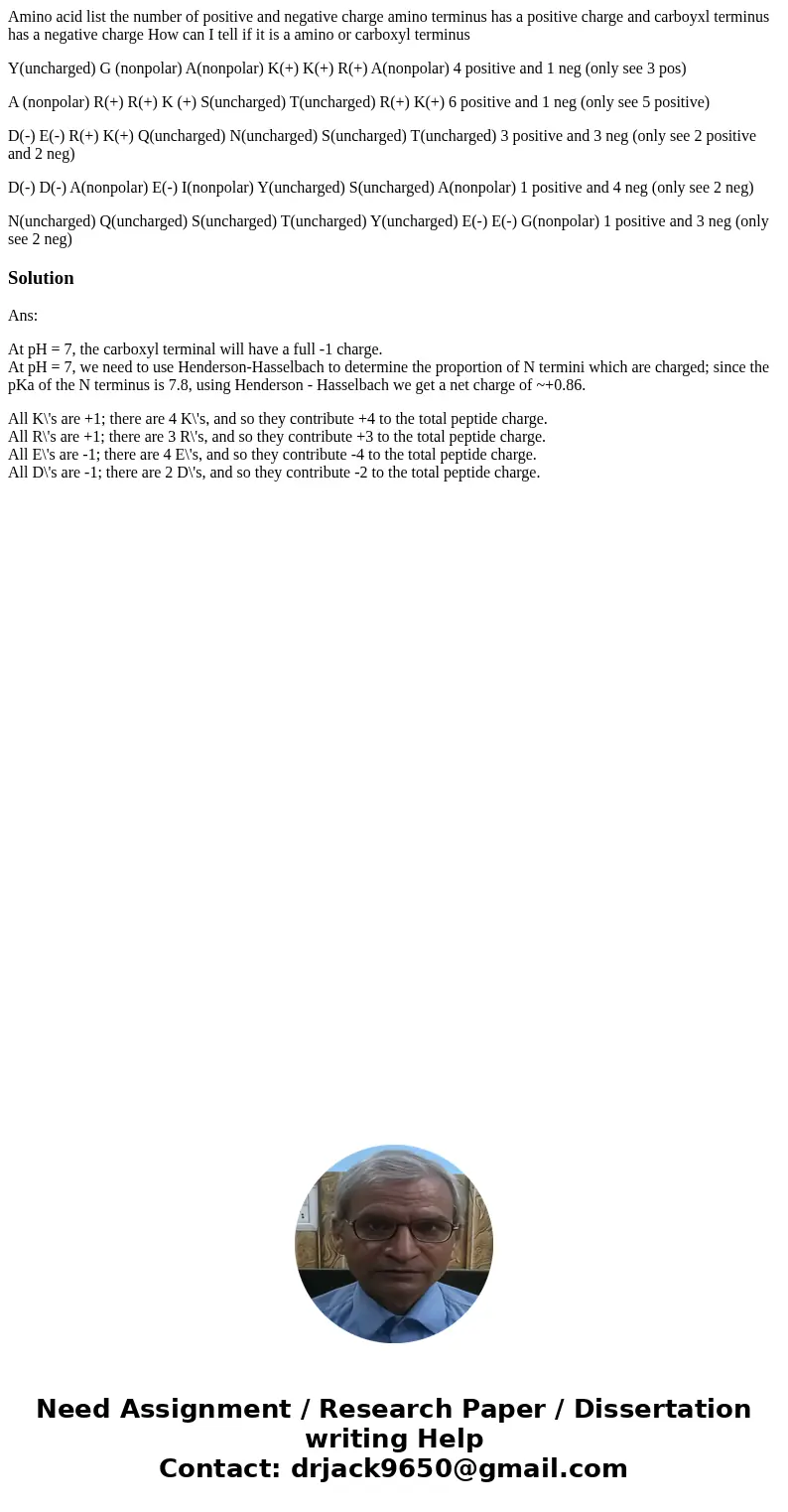Amino acid list the number of positive and negative charge a
Amino acid list the number of positive and negative charge amino terminus has a positive charge and carboyxl terminus has a negative charge How can I tell if it is a amino or carboxyl terminus
Y(uncharged) G (nonpolar) A(nonpolar) K(+) K(+) R(+) A(nonpolar) 4 positive and 1 neg (only see 3 pos)
A (nonpolar) R(+) R(+) K (+) S(uncharged) T(uncharged) R(+) K(+) 6 positive and 1 neg (only see 5 positive)
D(-) E(-) R(+) K(+) Q(uncharged) N(uncharged) S(uncharged) T(uncharged) 3 positive and 3 neg (only see 2 positive and 2 neg)
D(-) D(-) A(nonpolar) E(-) I(nonpolar) Y(uncharged) S(uncharged) A(nonpolar) 1 positive and 4 neg (only see 2 neg)
N(uncharged) Q(uncharged) S(uncharged) T(uncharged) Y(uncharged) E(-) E(-) G(nonpolar) 1 positive and 3 neg (only see 2 neg)
Solution
Ans:
At pH = 7, the carboxyl terminal will have a full -1 charge.
At pH = 7, we need to use Henderson-Hasselbach to determine the proportion of N termini which are charged; since the pKa of the N terminus is 7.8, using Henderson - Hasselbach we get a net charge of ~+0.86.
All K\'s are +1; there are 4 K\'s, and so they contribute +4 to the total peptide charge.
All R\'s are +1; there are 3 R\'s, and so they contribute +3 to the total peptide charge.
All E\'s are -1; there are 4 E\'s, and so they contribute -4 to the total peptide charge.
All D\'s are -1; there are 2 D\'s, and so they contribute -2 to the total peptide charge.

 Homework Sourse
Homework Sourse